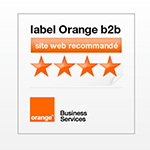However we want to call it, Enterprise 2.0, social business or collaborative whatsitsname, what we are watching now is a vendors-claimed increasing evolution toward maturity of leading platforms. During its last symposium, the Gartner Group held a session entitled “Managing Social Software Maturity: Supporting Pioneers and Settlers“, and is predicting a near-billion figure for the social software market in 2011.
If you haven’t yet jumped the shark, it is about time to buy one of these full-featured collaborative platforms, read the installation manual, hire some consultants, like me, to help driving the necessary internal change, and begin witnessing the benefits of fluid communication, contextual knowledge sharing and overall collaboration. Every serious vendor will provide you with distinctive stickers white papers claiming “Increased Productivity”, “ROI Warranted” or “Easy Adoption Curve” along with the software. Does this seem ironic to you? Yes it is, of course, but that’s what maturity usually means. And that’s seriously flawed.
The broken Project Framework
The way most of today’s business applications are conceived and integrated still inherit from the design-build-run model. Agile methods and iterative methodologies has added speed and flexibility to it, rapid prototyping allows for a better understanding and consideration of users needs, but the original Project Framework still prevails; once users’ needs are supposed to be understood, tools are designed and built, then users are left on their own to invent a way to get their job done.
I recently met my financial advisor to open a new savings account. For a few years now, French laws require banks to only propose products for which the client fully understands operation and risks involved. So, as we agreed on one of the accounts the advisor proposed me, she asked me a few questions about financial operations to allow the software to build my investor profile. But at the end, the application didn’t offer me the type of account we agreed on earlier. I am moderately risk-taking, so while there was clearly no problem with my choice, it was nevertheless blocked by the machine. Thus the advisor took a pencil and a notebook, and wrote down the details of the account for me, since she would have to tweak my answers to force my choice into the software.
People do this kind of things everyday in their job, as they have to tweak business processes to get the desired outcome. They develop a whole set of “grey behaviors” just to get their tasks done. While evidences of the flaws of the Project Framework constantly show up, it gets even worse when dealing with human interaction and collaboration, which involve some of the messiest dimensions of the human mind. As Paula Thornton wrote, requirements need not apply, in Enterprise 2.0 realm even less than elsewhere.
A growing chasm
Social business software is actually attempting, while adding more security, reliability and focus, to mimic some of the tools available on the internet. There is only one meaningful difference between both spheres, but it is crucial. Internet tools are constantly and organically reshaped and recreated by users, in continuous interactions. Product development is not driven by customers’ needs (or by what one thinks customers’ needs are) but by customers’ behaviors, in resonance with their own culture.
Of course, the strongest vendors have customers too, and listen to them. But how many customers? 50? 100? 500? Is this number big enough to ensure that their software will meet new customers’ culture? IBM asserts that their products are shaped by the 500 000 IBMers using them internally on a daily basis. That’s a bunch of people of course, but this mainly says that IBM’s platforms have evolved organically to fit their internal culture and work behaviors. But does this give us a clue about how they fit different organizational cultures? How many companies have an internal culture similar to IBM’s one? The more “mature” the social platforms get, the closer they get to the Broken Process Framework, constraining people to adapt their behaviors to predefined schemas, digging a chasm between the way they need to behave internally and habits they grow on social networks.
The “Like” button lesson
The cultural dimension of social platforms gets even deeper. The genius of Mark Zuckerberg, when launching the “Like” Facebook button, was that, through a simple word, he cut through all layers of meanings to directly appeal to emotion. Of course, “I like” means what it means, but it more than often rather means “I follow” or “I subscribe”. Involving emotion was clearly a winning strategy, as it has the same universal value, and makes people click without thinking first about what their action could lead to.
In the workplace, emotion has a much less obvious place, and most online actions are left to thinking, which is largely dependent on national and organizational culture. The simple button which accompanies the microblogging activity stream in most social software platforms can make a whole difference in the way the platform is used, according to its label; writing “share”, “publish”, “tell” or “post” is anything but innocent in any given company’s culture. User experience deserves more than being left to any external choice, and people won’t harness the full potential of social software unless it is tailored to the way they work and the culture they are immersed in.
A call to vendors
Because they are dealing with human behaviors and trying to leverage the collaborative potential of people, social platforms shouldn’t follow the broken path of most ERPs and business applications. Don’t make them customizable, but re-thinkable. Don’t design and build them for companies to run, time is right to sit down together around a table and to share experiences and insights, to fully grab the diversity of collaborative behaviors. I know that there is a struggle for profit and dominance going on, but please walk the talk of your white papers: collaboration, or call it coopetition, is the future of business. Even for social platform vendors.





